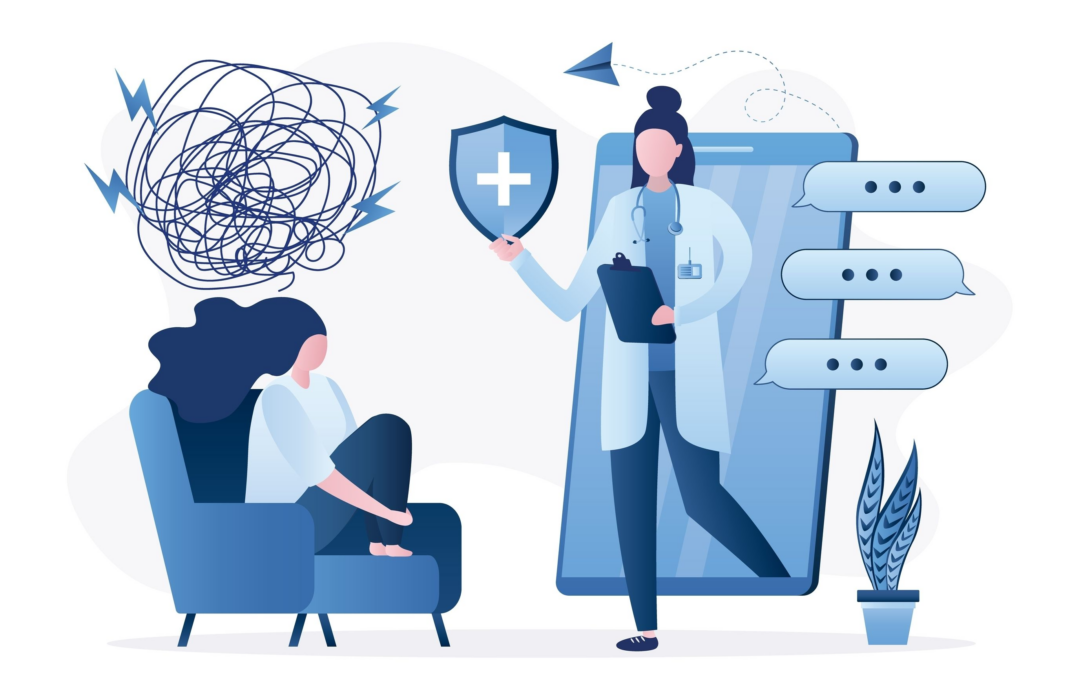Recently, the emergence of generative AI and large language models has revolutionised various industries, offering unprecedented capabilities in natural language processing and human-like conversation. These technologies have the potential to significantly impact the charity helpline and healthcare sectors by providing accessible, scalable, and cost-effective support to those in need. However, as with any powerful tool, some risks must be carefully considered and addressed.
Understanding Generative AI
Generative AI refers to systems that can create content, such as text or images, based on patterns learned from extensive training data. Large language models, a subset of generative AI, are specifically designed to understand and generate human-like text responses. These models utilise advanced algorithms and deep learning techniques to process and generate coherent and contextually relevant responses.
Technological Underpinnings of Generative AI
Generative AI leverages advanced machine learning algorithms such as Generative Adversarial Networks (GANs), Variational Autoencoders, and Transformer-based models like GPT-3 or GPT-4. GANs, for instance, involve two competing neural networks: a ‘generator’ which produces novel data instances, and a ‘discriminator’ which evaluates the authenticity of the generated instances.
In the context of charity helplines or healthcare, these technologies could generate human-like responses or propose potential solutions to complex problems based on training data. Meanwhile, Transformer-based models like GPT-4 utilise self-attention mechanisms, processing inputs in parallel rather than sequentially, thereby significantly enhancing speed and efficiency. Understanding these underpinnings is essential for stakeholders, as it allows them to assess the strengths and limitations of different AI technologies and choose the one that best suits their specific needs.
Benefits of Generative AI in the Helpline Space
The potential applications of generative AI and large language models in the charity helplines and healthcare sectors are vast. These technologies can provide round-the-clock support, personalised advice, and emotional assistance to individuals seeking help for various issues, ranging from mental health concerns to medical inquiries. AI has the potential to help address the severe shortage of clinical treatment providers and provide individuals and families with a moderated, fully automated resource. By implementing AI-driven chatbots or virtual assistants, organisations can expand their reach, reduce waiting times, and extend their support to a larger number of people.
The Risks of Generative AI
While the benefits of generative AI and large language models are compelling, it is crucial to acknowledge the risks associated with their use. Recent incidents, such as the one reported in the article “An Eating Disorders Chatbot Offered Dieting Advice, Raising Fears About AI in Healthcare” by NPR, highlight the potential dangers of relying solely on AI models for sensitive and high-risk topics. A chatbot called Tessa was created by the National Eating Disorders Association (NEDA) as a resource to help prevent eating disorders. Tessa was designed to provide individuals and families with a moderated, fully automated resource. However, soon clients raised concerns about its harmful advice. Tessa gave recommendations such as losing 1 to 2 pounds per week, eating no more than 2,000 calories in a day, and having a calorie deficit of 500-1,000 calories per day. While these recommendations may sound benign to the general listener, they can fuel the focus on weight loss that characterises eating disorders. As a result, Tessa was taken down indefinitely by the National Eating Disorders Association (NEDA).
Other overarching concerns must be carefully considered and addressed:
Data Bias and Discrimination
Generative AI models learn from vast amounts of data, and if the training data contains biases, the AI may unknowingly perpetuate them. This raises concerns of potential discrimination or unequal treatment based on factors like gender, race, or socioeconomic background. Bias in AI systems can exacerbate existing societal inequalities and undermine the principle of equal access to support services.
AI Regulation and Governance
Another significant concern revolves around AI regulation and governance. As AI technology becomes more prevalent, robust regulatory frameworks are necessary to ensure its safe and responsible use. However, regulating AI can be a complex issue, given the fast pace of technological advancements and the global nature of digital services. This makes it challenging to develop universally applicable rules. A balance must be struck between fostering innovation and ensuring public safety and ethical standards. There is a need for ongoing multi-stakeholder dialogues, involving policymakers, industry leaders, AI developers, ethicists, and users, to explore the development of effective governance mechanisms for AI.
Privacy and Data Security
The use of generative AI involves processing and storing large amounts of personal data. There are concerns regarding the privacy and security of sensitive information shared during interactions. Unauthorised access to personal data or data breaches could have severe consequences for individuals seeking support or treatment, eroding trust in AI-powered services.
Legal and Ethical Considerations
The use of generative AI in charity helplines and healthcare raises essential legal and ethical considerations. Determining liability and responsibility in the case of AI-generated advice or actions can be complex. Ethical concerns surround issues such as informed consent, transparency, and the overall impact on the relationship between service providers and users.
Philosophical Implications
Deploying generative AI in fields like charity helplines and healthcare stirs up philosophical quandaries. These include debating whether an AI, regardless of its advancement, can truly mimic human emotions or provide nuanced human-like empathy. Such philosophical dilemmas need a comprehensive understanding of the technology, the charity and healthcare sectors, and the fundamentals of human society.
Mitigation Strategies for Risk Reduction
The incident with the chatbot implemented by NEDA serves as a stark reminder of the importance of responsible implementation and risk mitigation strategies. Several measures can be implemented to mitigate the risk of providing harmful advice:
- System Prompts and Limitations
Clear system prompts can guide the AI model’s responses and establish boundaries, specifying the topics it can and cannot discuss. This helps reduce the likelihood of inappropriate advice being provided.
- Ongoing Human Monitoring and Review
Incorporating human operators who review and moderate AI-generated responses adds an extra layer of quality control, ensuring that sensitive topics are handled appropriately. Regular monitoring and evaluation of AI interactions are vital to identify any potential issues, correct inaccuracies, and refine the model’s performance over time.
- User Feedback and Iterative Improvement
Encouraging users to provide feedback on their experiences can help identify areas for improvement, enabling continuous refinement of the AI model’s performance, accuracy, and sensitivity.
How Generative AI Can Be Safely Applied in Charity and Healthcare Sectors
We at Call Handling Services recognise that there are certain areas within the charity sector where generative AI can be effectively employed without significant risks. By conducting a thorough review of the support questions handled by the helpline on a case-by-case basis and understanding the potential risks associated with the responses, controlled rules can be applied to mitigate those risks effectively.
Helplines
With careful controls and well-crafted system prompts, newer generative AI models can be trained to provide limited advice within the field covered by the charity. However, it is essential to have strict monitoring mechanisms in place to continuously assess the advice given and update the training data as needed. It is important to note that the AI’s responses should always be accompanied by a disclaimer regarding medical advice, directing users to consult professionals for specific concerns. By instructing the AI not to discuss sensitive topics and instead referring individuals directly to the helpline, the risks associated with addressing high-risk subjects can be mitigated effectively. This approach ensures that the AI’s capabilities are harnessed responsibly and in alignment with the mission and values of the charity or healthcare provider.
Non-sensitive Issues and Process-related Questions
Generative AI can be utilised to provide guidance and advice on non-sensitive matters within the field of the charity’s work. This includes offering information on how to donate, volunteer, or engage in other process-related activities. By developing specific guidelines and rules, AI can assist in answering these types of questions reliably and accurately, ensuring that users receive the necessary information promptly.
General Information and Resource Allocation
AI tools can serve as a valuable tool for disseminating general information and distributing resources efficiently. Charities often encounter inquiries about their mission, projects, or eligibility criteria for receiving assistance. AI-powered systems can provide standardised and consistent responses, allowing charities to handle a larger volume of queries and efficiently direct individuals to the appropriate resources.
Educational and Awareness Campaigns
AI can play a significant role in supporting educational and awareness campaigns initiated by charities. Generative AI models can be trained on curated content to provide accurate and engaging information about specific causes, helping to spread awareness and encourage active participation. Through AI-generated content, charities can reach a wider audience and inspire individuals to contribute to their mission.
Automated Follow-ups and Support
Charities and Helplines often face resource constraints, limiting their ability to provide ongoing support to individuals seeking assistance. Generative AI can be leveraged to automate follow-up interactions, providing regular personalised updates, reminders, and suggest booking appointments. This ensures that individuals stay engaged and connected with the charity, even when direct human interaction is limited.
By applying controlled rules and guidelines, generative AI can be effectively integrated into the charity and healthcare sectors, contributing to the expansion of their reach and enhancing their ability to provide support. Call Handling Services recognises the importance of thoroughly assessing the context, understanding the associated risks, and implementing robust rules to mitigate those risks effectively.
Conclusion
While generative AI still poses risks in providing advice on sensitive high-risk topics, it can be safely harnessed in specific areas within the charity and healthcare sectors with use of clear guidelines and regulations. As a provider of contact centre and AI chatbot solutions, Call Handling Services recognises the importance of thoroughly assessing the context, understanding the associated risks, and implementing robust rules to mitigate those risks effectively. Carefully controlled advice for helplines, support with non-sensitive issues, process-related questions, general information dissemination, educational campaigns, and automated follow-ups are areas where generative AI can augment charity services and engage with a broader audience while maintaining responsible and ethical practices.
Through careful consideration and responsible implementation, generative AI can become a valuable tool in enhancing the reach and impact of charities and healthcare providers, while safeguarding the well-being and trust of those seeking support.


